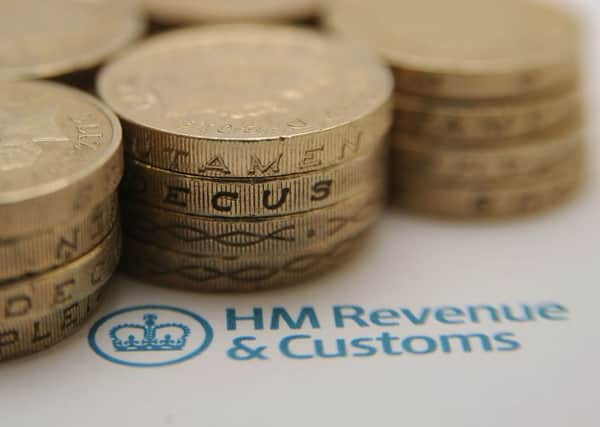Savers warned to be wary over new tax allowance rules


The personal savings allowance, taking effect on 6 April, will mean that about 95 per cent of savers no longer have to pay tax on their savings income.
Basic rate taxpayers will be able to take £1,000 in savings interest tax-free, while higher rate taxpayers will be able to earn £500 of interest before tax is charged on it (although there’s no allowance for those paying tax at 45 per cent).
Advertisement
Hide AdAdvertisement
Hide AdWhile the change will be welcome for many people, there may also be a sharp sting in the tail.
Tax on interest is currently taken at source by banks, building societies and other savings providers. But tax on savings interest will from April be collected through either Paye or the self-assessment system. The R85 form currently used by non-taxpayers to ensure they aren’t charged tax on savings interest will become obsolete.
Savers should be made aware that the new allowance doesn’t apply only to interest received from banks and building societies, said Richard Libberton, private wealth manager at Anderson Strathern Asset Management. “Interest paid from other providers such as credit unions and certain national savings products will all qualify for the new personal savings allowance, as will interest distributions from those holding authorised unit trusts, investment trusts, corporate bonds and gilts,” he said.
The change will simplify the tax position for many people with modest savings, said the Low Incomes Tax Reform Group (LITRG). However, it said the new savings allowance is “needlessly complex in its implementation”.
Many savers will “really struggle” to understand how it works and how it interacts with the new £5,000 dividend allowance, which also takes effect on 6 April. Some face being penalised by HMRC if they fail to navigate the self-assessment system, according to the LITRG, particularly savers who don’t realise they’ll need to keep track of how much savings interest they’ve earned.
But HMRC and the high street banks have been slow to ensure savers are informed of the change and some savings provider websites carry incorrect information on the new allowance.
“People should keep an eye on their level of savings income to ensure they do not stray into a different tax band,” said LITRG chairman Anthony Thomas. “They should also continually check data received from HMRC.”
The new allowance may have unintended consequences for people who move in and out of the higher rate tax band, Libberton said. “For example, if you’re a basic rate taxpayer with a combined amount of income and savings interest that tips your total income into the higher tax bracket by just £1, you will lose £500 of savings allowance as you become a higher rate taxpayer,” he said.
Advertisement
Hide AdAdvertisement
Hide AdPensioners are also likely to be affected, especially those who have taken advantage of the so-called pension “freedoms” to take cash from their pension funds and leave it in savings accounts.
The £5,000 dividend tax allowance being introduced on 6 April could add to the confusion. Dividends above £5,000 will be taxed at 7.5, 32.5 and 38.1 per cent (for basic, higher and additional rate taxpayers respectively). Currently there’s no income tax on dividend income for basic rate tax payers, but there’s a 25 per cent charge for higher rate taxpayers and 30.5 per cent for those on the additional rate.
The new system means that, for example, a basic rate taxpayer receiving dividends of more than £5,001 in the same tax year will have to pay tax on it through the self-assessment system. John Cairns, partner at French Duncan Chartered Accountants in Edinburgh, said: “If interest rates rise or a company pays an exceptional dividend, we’ll having people popping in and out of tax year upon year with related penalties, many of which are disproportionate and can rack up quickly, unbeknown to the poor victim.”